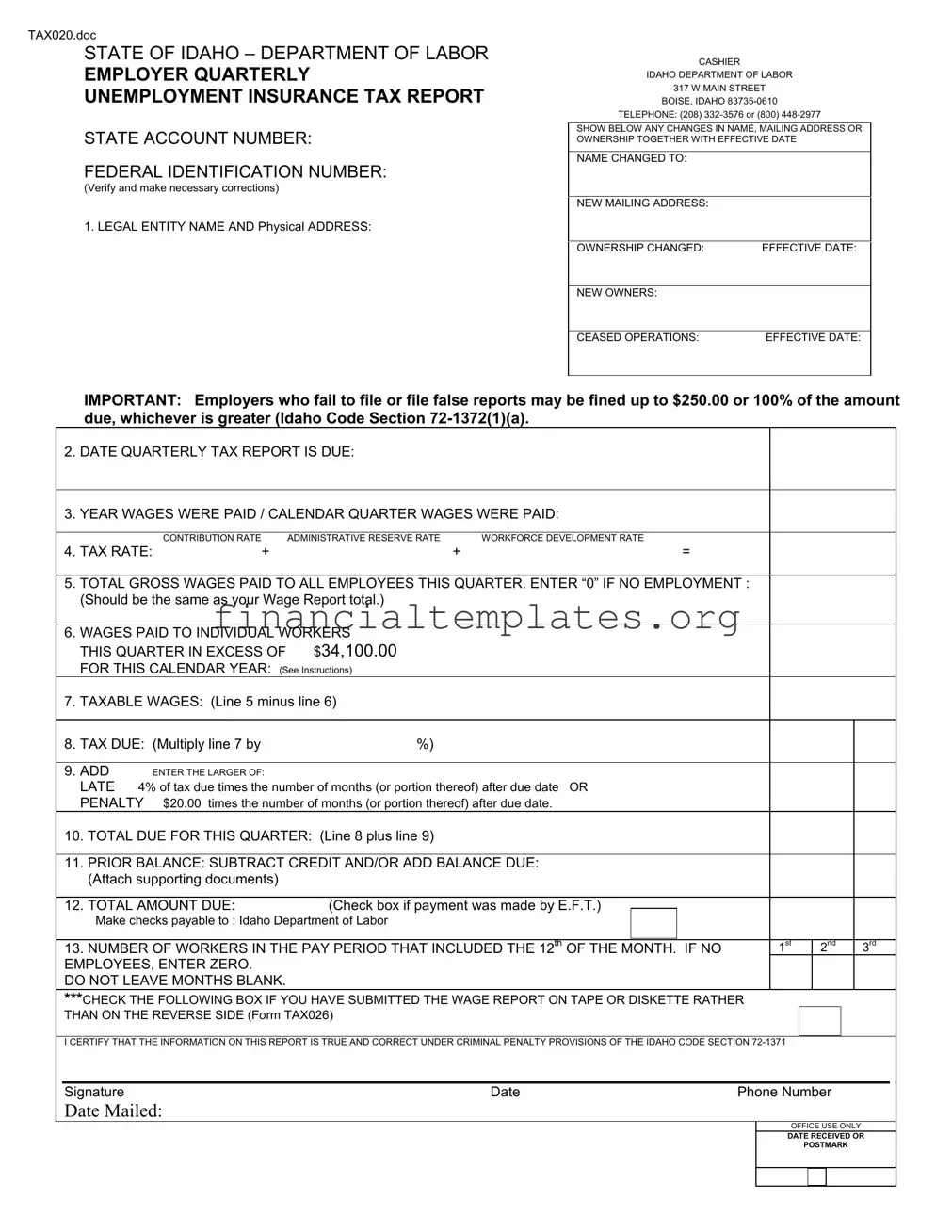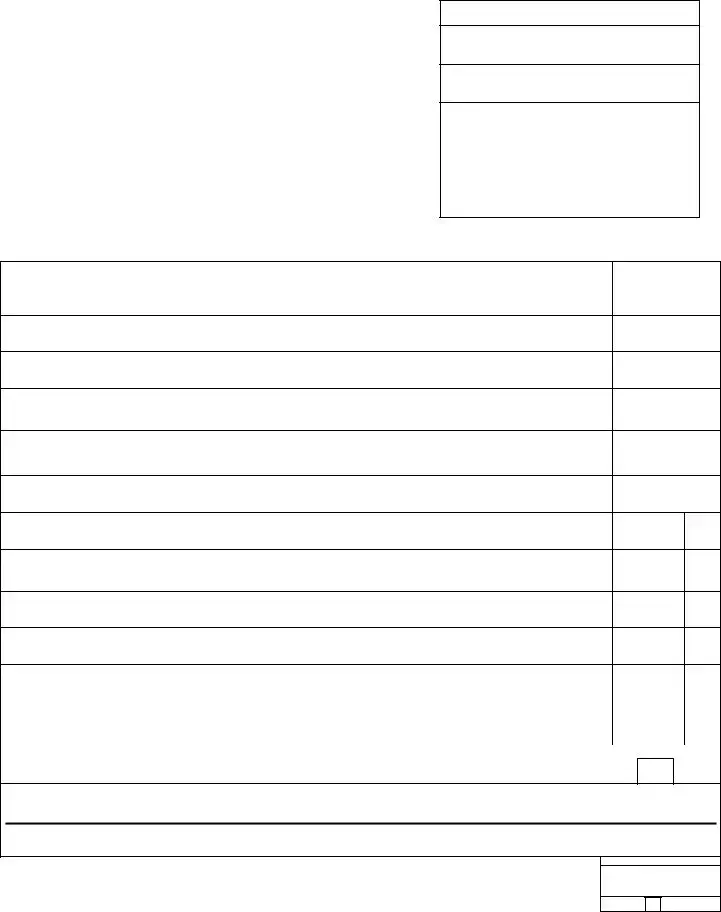The Tax 020 form bears similarity to the Federal Employer's Quarterly Federal Tax Return, commonly known as Form 941, used by employers to report income taxes, social security tax, or Medicare tax withheld from employees' paychecks. Both require employers to detail wages paid and taxes owed for the quarter, making them key tools in ensuring compliance with respective tax obligations. While Tax 020 caters to state-level unemployment insurance requirements in Idaho, Form 941 addresses federal payroll taxes, highlighting their parallel roles in tax administration.
Likewise, the state-specific Unemployment Insurance Wage Report forms, found in various states, parallel the Tax 020 form by collecting information on wages employers have paid, which determines unemployment insurance contributions. These forms often require employers to report the total wages paid during the quarter and identify those exceeding the state's wage base limit for unemployment insurance. Both types of documents serve a critical role in financing the unemployment insurance system, albeit tailored to the unique regulations of each state.
The Employer’s Annual Federal Unemployment (FUTA) Tax Return, or Form 940, similarly echoes the functions of the Tax 020 form through its focus on unemployment. Form 940 is designed for employers to report annual federal unemployment taxes, with attention to wages subjected to FUTA tax. Although the Tax 020 form is more frequent and state-specific, both forms underscore the importance of supporting unemployment funds, albeit on different governmental levels.
The Quarterly Contribution Return and Report of Wages (Continuation) (Form DE 9C) is another document with a similar purpose, especially prevalent in states like California. This form captures detailed wage information for employees to calculate state unemployment insurance and employment training taxes. By focusing on quarterly wage reporting, both the DE 9C and Tax 020 form ensure accurate calculation of employer contributions towards unemployment and workforce development funds.
Another analogous form is the New York State Quarterly Combined Withholding, Wage Reporting, and Unemployment Insurance Return, NYS-45. This document, much like the Tax 020 form, consolidates the reporting of wages paid, taxes withheld, and unemployment insurance contributions into a single submission on a quarterly basis. It streamlines the process for New York State employers, mirroring the functionality of the Tax 020 form for Idaho employers, in maintaining tax and unemployment insurance compliance.
The Texas Workforce Commission’s Employer’s Quarterly Report (Form C-3) offers a close comparison too. Employers in Texas use this form to report wages for each employee, including those in excess of the unemployment tax wage base. Just as the Tax 020 form, the C-3 facilitates the funding of the state’s unemployment compensation system, reinforcing the shared goal of managing unemployment benefits through employer contributions.
Lastly, the Employer’s Quarterly Report for New Hire Reporting, a requirement in many states, shares the common goal of updating employment records, albeit for a different purpose. This report, although not focusing on taxation, complements the objectives of the Tax 020 form by ensuring timely updates on employment status which can impact unemployment insurance calculations and compliance with child support enforcement efforts.

